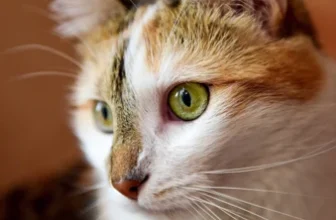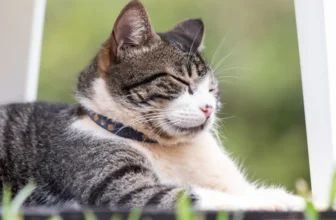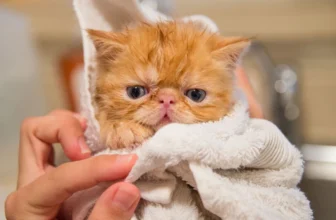You love your American Wirehair and want to keep them looking their best. However, controlling their wild coat can seem like a daunting task. Fear not, with the right tools and techniques, you can groom your American Wirehair like a pro. In this comprehensive guide, we will cover all of the steps you need to take care of your furry friend’s coat, including why grooming is important, the tools you’ll need, proper grooming techniques, special cases to consider, and how to troubleshoot common issues. Whether you’re a seasoned pro or new to cat ownership, this guide will help you groom your American Wirehair like a champ.
Why Grooming is Important
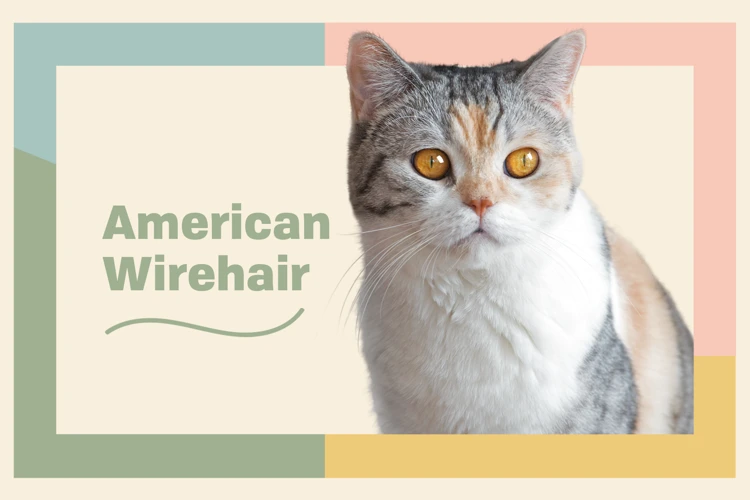
Grooming your American Wirehair cat is not just about keeping their coat shiny and clean, it also provides several benefits for both you and your furry friend. It is essential to maintain the coat’s health, prevent matting and hairballs, and strengthen the bond between you and your pet. Knowing the unique traits and characteristics of the American Wirehair coat, such as its texture and patterns, can also help you understand why grooming practices are essential to keep the coat looking its best. Let’s explore the importance of grooming and how it can benefit you and your American Wirehair.
Improves Coat Health
Keeping your American Wirehair’s coat well-groomed is essential for their overall health and well-being. Regular grooming of your pet helps to promote healthy fur growth and prevents skin irritations and infections. Brushing your pet’s fur helps to distribute oils evenly throughout the coat and also helps in removing dirt and tangles from the fur. If left unbrushed, your cat’s fur can become matted, which can cause skin irritation, pain, and may even lead to infection. Matting can also cause skin problems that can be challenging to manage if not looked after in time.
It’s essential to note that American Wirehair’s coat is unique, and keeping its texture natural is always the preference. Over grooming or excessive bathing can alter its characteristic texture and damage the coat. Your pet’s environment and genetics play a significant role in determining the fur texture of an American Wirehair. Therefore, it is crucial to know American Wirehair’s coat traits and genetics before grooming to provide the best care.
It is essential to understand how regular grooming can help in preventing hairballs, which can be a severe issue for a cat. The substantial grooming process needed for American Wirehair’s coat can help minimize the digestive blockages caused by hairballs. As their coat sheds much less, there is much less fur for them to swallow, leaving them less prone to hairball problems.
Below is an html table outlining the key benefits of grooming your American Wirehair’s coat:
| Benefits of Regular Grooming |
|---|
| Prevents matting and skin infections |
| Improves circulation by removing dead hair and skin cells |
| Helps to prevent hairballs |
| Strengthens the bond between pet and owner |
| Acts as a medical check-up for the pet |
It is evident that grooming your American Wirehair’s coat has countless benefits from health to bonding. There are many myths around American Wirehair’s coat, and it is essential to learn about them. For interesting reading, you may want to check out American Wirehair coat myths and American Wirehair coat patterns, where you can learn more about the peculiarities of their coat.
Prevents Matting and Hairballs
Matting and hairballs are common problems that American Wirehair owners face when they fail to maintain their pet’s coat. When fur becomes tangled and knotted, it can result in painful mats that pull on the skin, causing discomfort and even infection. Regular grooming with proper tools such as a slicker brush and wide-tooth comb can prevent matting and reduce the risk of hairballs.
Hairballs are formed when cats lick their fur to remove loose and excess hair. When they swallow this hair, it can collect in their stomach and form hairballs, which can cause discomfort and even serious medical issues if not addressed promptly. Regular brushing and grooming can help to remove loose hair and minimize shedding, thus reducing the amount of hair that your cat ingests.
It’s important to give special attention to certain areas where matting can easily occur, such as under the legs, behind the ears, and around the neck. These areas are prone to tangling due to friction and moisture. With consistent grooming sessions, you can easily prevent matting by removing tangles and knots before they turn into mats.
In addition to brushing and combing, bathing your American Wirehair with a waterless shampoo can also help to prevent matting and hairballs. Waterless shampoo is a convenient and gentle way to clean your cat’s fur and release any tangles or knots. It’s important to only use cat-specific products, as others may cause skin irritation or allergic reactions.
By maintaining your American Wirehair’s coat, you can also strengthen the bond between you and your feline friend. Grooming sessions provide an opportunity to spend quality time together and reinforce trust and affection. Plus, a clean and well-groomed cat is simply more pleasant to be around!
Remember, regular grooming is essential to your American Wirehair’s coat health and overall well-being. Don’t fall for myths that suggest grooming is unnecessary or that cats groom themselves. Every cat requires some level of human assistance to maintain a healthy coat, especially ones with uniquely textured coat, like the American Wirehair. With consistent grooming using the right tools and techniques, you can keep your American Wirehair’s coat looking and feeling its best.
Strengthen the Bond
Grooming your American Wirehair cat not only helps to keep their coat healthy, but it’s also a great way to strengthen the bond between you and your furry friend. Regular grooming sessions give you both the chance to spend quality time together and can help your cat feel more comfortable with being handled. Additionally, grooming allows you to keep an eye out for any irregularities or potential health issues that may arise.
Regular grooming allows for a deeper connection with your pet and shows them how much you care for them.
As you groom, be sure to talk to your cat in a soothing voice and offer treats as a reward for good behavior. This will help them associate grooming with positive experiences and make the process more enjoyable for both of you.
Understanding your American Wirehair’s coat texture and patterns is crucial when it comes to grooming. Refer to our previous articles on genetics, and coat patterns to learn more about why your cat’s coat is unique and how you can best care for it.
Grooming time can also be an opportunity to examine your pet’s overall health. Look for any irregularities like lumps and bumps or changes in the skin or coat. Regular grooming can also help you detect parasites like fleas and ticks, and help you take action before they cause major issues.
By regularly grooming your American Wirehair cat, you’re not only taking care of their physical health but also strengthening your bond with them. So get your grooming tools ready and show your furry friend some love!
Grooming Tools You’ll Need
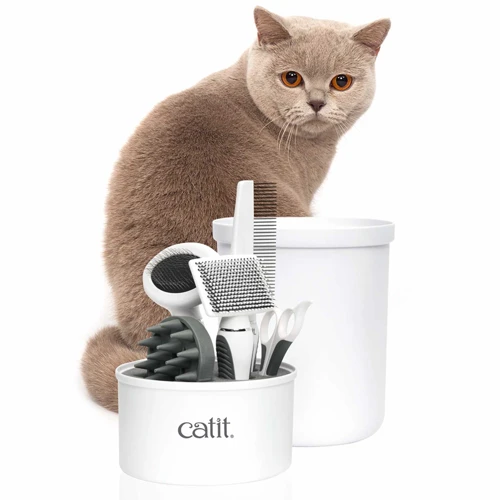
Finding the right grooming tools is crucial in ensuring that you give your American Wirehair the care they need. There are several helpful grooming tools available in the market that can make grooming your cat easier. From a slicker brush to a nail clipper, choosing the best tools is vital to maintaining the overall health and wellness of your pet’s coat. In the following section, we’ll take a closer look at the different grooming tools you’ll need to groom your American Wirehair in detail. But before we move on, have you ever wondered how American Wirehair cats have evolved over time? Check out our article to learn more.
Slicker Brush
When grooming your American Wirehair’s coat, one of the essential tools you’ll need is a slicker brush. This type of brush has tightly packed fine wire bristles that can effectively remove loose hair, dirt, and mats from your cat’s fur. Here are some tips to make the most out of your slicker brush:
- Start with a clean coat: Before using the slicker brush, make sure your cat’s coat is free from tangles, dirt, and debris. To do this, use a wide-tooth comb to remove any mats and loose hair gently.
- Brush in the direction of hair growth: Using the slicker brush, brush your cat’s coat in the direction the fur grows. Be gentle and avoid brushing too harshly, especially around sensitive areas like the belly and legs.
- Use short strokes: Instead of long, sweeping strokes, use short and quick strokes with the slicker brush. This technique can help remove loose hair without damaging the coat.
- Focus on trouble spots: Pay extra attention to areas where mats tend to form, such as behind the ears and under the legs. Gently work on these areas with the slicker brush to prevent matting.
- Don’t overdo it: While brushing your cat’s coat is important, you don’t want to overdo it. Aim to brush your cat’s coat a few times a week, depending on their individual grooming needs. Overbrushing can damage the coat and cause skin irritation.
Using a slicker brush is an effective way to keep your American Wirehair’s coat healthy and mat-free. With the right technique and frequency, your cat’s coat will look shiny and healthy.
Wide-tooth Comb
A wide-tooth comb is an essential tool for grooming your American Wirehair’s coat. With its widely spaced teeth, it can effectively detangle mats and knots without damaging your cat’s hair. Here are some key features to consider when choosing the right comb for your furry friend:
– Tooth spacing: Look for a comb with widely spaced teeth, as this will help prevent painful tugging and tearing of your cat’s fur. Ideally, the teeth should be at least 1 inch apart.
– Material: Wide-tooth combs can be made from a variety of materials, including metal, plastic, and wood. Metal combs are durable and easy to clean, while wooden combs are gentle on your cat’s skin and hair. Plastic combs are inexpensive but may not be as sturdy as other materials.
– Ease of use: Consider how comfortable the comb is to hold, and whether it’s easy to maneuver through your cat’s coat. A comb with a non-slip grip can be helpful, especially when working with wet hair.
When using a wide-tooth comb on your American Wirehair, start by combing from the ends of the hair towards the roots, working in small sections. If you encounter a knot or mat, use your fingers or a dematting tool to gently loosen it before continuing to comb.
Regular combing with a wide-tooth comb can help keep your cat’s coat healthy and tangle-free, and can also be a bonding experience between you and your furry friend.
Nail Clippers
Keeping your American Wirehair’s nails trimmed is an important part of their grooming routine. Long nails can be uncomfortable for your pet and may cause them to have difficulty walking or even break their nails. To properly trim your pet’s nails, you’ll need a few essential tools. Here are some things to consider when it comes to nail clippers:
- Type: There are two main types of nail clippers available – guillotine and scissor. Guillotine clippers have a small hole where you insert your pet’s nail and a blade that slides across to cut the nail. Scissor clippers, on the other hand, are designed like regular scissors, but with semi-circular blades. Before purchasing a set of clippers, consider which type would be best suited for your pet’s needs.
- Size: You’ll want to make sure the clippers you choose are an appropriate size for your pet’s nails. Using clippers that are too small can be difficult to use and may not provide a clean cut, while clippers that are too large can be cumbersome.
- Quality: Investing in a good pair of nail clippers will save you both time and stress in the long run. Cheap, low-quality clippers can be difficult to use and may not provide a clean cut, which could damage the nail and hurt your pet. Consider looking for high-quality clippers that are made from durable materials.
- Technique: It’s important to know how to properly use your nail clippers before you start. Hold your pet’s paw gently but firmly and carefully cut the nail, being careful not to cut too close to the quick. The quick is the pink part of the nail that contains blood vessels, so cutting too close can be painful for your pet and may cause bleeding. If you accidentally cut the quick, use a styptic powder or cornstarch to stop the bleeding.
By choosing the right type and size of nail clippers and learning the proper technique for trimming nails, you can help keep your American Wirehair’s paws healthy and strong. Regular nail trims (once or twice a month) can also reduce the risk of breaking a nail or causing long-term damage to the paws. So make sure to include nail clipping as part of your pet’s regular grooming routine.
Ear Cleaner
It’s important not to overlook the ears when grooming your American Wirehair cat. To keep them clean and healthy, you’ll need a good ear cleaner.
What to look for in an ear cleaner:
| Criteria | Description |
|---|---|
| Gentle | Look for an ear cleaner that is gentle on the ears. Avoid anything with harsh chemicals that could irritate your cat’s skin. |
| Antibacterial | Choose an ear cleaner with antibacterial properties to help prevent infections. Check with your vet to make sure the ear cleaner is safe for your cat. |
| No alcohol or fragrance | Alcohol and fragrance can both cause irritation, so it’s best to avoid ear cleaners that contain them. |
How to clean your cat’s ears:
1. Start by holding your cat securely on your lap.
2. Gently massage the ear to loosen any dirt or wax.
3. Use the ear cleaner according to the instructions on the label. Usually, you’ll need to apply a few drops to the ear canal and massage the base of the ear to distribute the cleaner.
4. Use a cotton ball or soft cloth to wipe away any excess cleaner and debris.
5. Repeat with the other ear.
6. Never insert anything into your cat’s ear canal, as this can cause injury.
By following these steps, you’ll help keep your American Wirehair’s ears clean and free of infection. If you notice any unusual symptoms, such as redness or discharge, contact your vet right away.
Towel and Waterless Shampoo
When it comes to grooming your American Wirehair’s coat, it’s essential to have the right tools on hand. In addition to a slicker brush, wide-tooth comb, nail clippers, and ear cleaner, you’ll also need a towel and waterless shampoo.
Waterless shampoo is an excellent option for in-between bathing sessions or if your American Wirehair isn’t a fan of getting wet. It’s also suitable for those who don’t have access to a bathtub or shower.
To use a waterless shampoo, simply spray the product onto your cat’s coat and massage it in. Then, use a towel to wipe away any residue. It’s a quick and effective way to keep your pet clean and smelling fresh.
Make sure to choose a high-quality waterless shampoo that’s specifically formulated for cats. Look for ingredients like oatmeal and aloe vera to soothe and nourish the skin. Avoid products that contain harsh chemicals or fragrances that could irritate your cat’s sensitive skin.
Using a towel is also an essential part of the grooming process. After using the slicker brush and comb, you can use a towel to remove any loose fur and debris from your cat’s coat. It’s also helpful for drying your cat off after a bath.
When choosing a towel, opt for a soft, absorbent material that won’t scratch or irritate your cat’s skin. It’s also a good idea to have multiple towels on hand in case one gets too wet or dirty.
With the right tools, including a towel and waterless shampoo, you can keep your American Wirehair looking and feeling their best between grooming sessions.
Grooming Techniques

When it comes to grooming your American Wirehair’s coat, it’s important to have the right tools and techniques to keep their fur healthy and looking its best. Regular grooming can prevent matting, hairballs, and other health issues, and it can also strengthen the bond between you and your furry friend. In this section, we’ll explore the grooming techniques that will help you achieve a beautiful coat for your cat. From brushing to bathing, we’ll guide you step-by-step through the process of keeping your American Wirehair looking its best. So, get ready to roll up your sleeves and let’s get started!
Brushing
Brushing your American Wirehair’s coat is an essential part of grooming. It not only keeps the coat clean but also helps distribute natural oils throughout the fur, leading to a healthy and shiny coat. Here are the steps you need to follow for brushing your American Wirehair’s coat.
- Step 1: Start by using a slicker brush to remove any loose fur and tangles. Make sure to brush in the direction of hair growth to prevent any discomfort to your pet.
- Step 2: Once you’ve brushed the entire coat with the slicker brush, use a wide-tooth comb to remove any remaining tangles. This comb will also help you to check for any mats that may require extra attention.
- Step 3: If you find any mats, try to comb them out gently using your fingers, or use a dematting tool as necessary. Never use scissors to cut out mats as it may injure your pet’s skin.
- Step 4: After brushing, give your American Wirehair a thorough rubdown with a towel to remove any loose fur and debris.
Brushing also allows you to check your pet’s coat for any abnormalities like lumps, bumps or any signs of skin irritation. You should brush your pet’s coat at least once a week, but it depends on the length and texture of your pet’s fur. Keep in mind that brushing too frequently may damage the coat and cause it to break easily.
By following these steps for brushing your American Wirehair’s coat, you’ll not only maintain their coat’s health, but also strengthen the bond between you and your pet.
Bathing
Giving your American Wirehair a bath is an important aspect of their grooming routine. Bathing helps to remove dirt and debris from their coat and keeps them smelling fresh. While it is not necessary to bathe your cat frequently, especially if they are indoor cats and have a self-grooming tendency, it is still necessary to do so occasionally. Here are steps to follow to give your American Wirehair a bath:
- Preparation is key: Gather all the necessary bathing tools such as a cat shampoo, towels, and a non-slip mat for the bathtub or sink. Ensure that the water used is lukewarm; hot water can scald your cat while cold water can shock them.
- Before getting your cat wet, brush their coat gently with a slicker brush to remove any tangles and mats. This will make the shampooing process easier and less stressful for you and your cat.
- Place your cat in the bathtub or sink and wet them thoroughly, avoiding their face as cats don’t like water in their eyes, nose, and ears. You can use a cup or showerhead to pour water over your cat.
- Apply a small amount of cat shampoo and lather it gently over your cat’s body. Be extra careful when shampooing around sensitive areas such as the face, paws, and genitals. Pro tip: Use a cat-specific shampoo as they are specifically formulated for feline skin and promote a healthy, glossy coat.
- Rinse your cat thoroughly to remove all the shampoo. Make sure there is no residue left as it can irritate your cat’s skin and cause itchiness.
- Using a towel, gently dry your cat, removing as much water as possible. If your cat tolerates it, you can use a hairdryer on its lowest setting to dry the coat gently. Avoid using too much heat and hold the dryer several inches away from your cat’s skin.
- Lastly, reward your American Wirehair with treats and love for being such a good sport during its bath time. You may want to wipe its face and paws with a damp cloth to ensure that it is clean and dry.
Pro tip: Always ensure that your cat is calm and comfortable throughout the bathing process. Use a calm voice and speak gently to them, and remember to have post-bath treats to make the experience more enjoyable. Avoid using human shampoo or harsh grooming products on your cat as they can irritate its skin.
Trimming Nails
Keeping your American Wirehair’s nails trim is important for their comfort and health. Long nails can cause discomfort and pain as well as contribute to joint problems. Here are the steps for trimming your American Wirehair’s nails:
1. Choose the right nail clipper: There are two types of nail clippers for cats- the guillotine type and the scissor type. The guillotine type is a small hole where you put the nail and squeeze to make the blade cut. The scissor type looks like regular scissors and cuts by closing the blades. Choose a clipper that you’re comfortable with.
2. Get your cat relaxed: Make sure your cat is in a calm state before you start cutting. You can try playing with your cat or just petting them to help them relax and feel comfortable.
3. Examine the nail: Look at the nail to see where the quick is located. The quick is the pink part that contains blood vessels and nerves. You want to cut just below it to avoid causing bleeding or pain.
4. Cut the nail: Hold your cat’s paw firmly and clip the nail below the quick in one smooth motion. Avoid clipping too close to the quick to prevent bleeding. If your cat has dark nails and you can’t see the quick, cut a little bit at a time until you see a black dot in the center- that’s the start of the quick.
5. Praise and treat: Don’t forget to praise and reward your cat with treats after trimming their nails. This will help them associate the experience with something positive.
Remember, if you’re unsure about trimming your cat’s nails or if your cat is resistant, it may be better to seek the help of a professional groomer or veterinarian. Keeping your American Wirehair’s nails trimmed regularly is a simple yet important aspect of their overall grooming routine and will help them stay healthy and happy.
Cleaning Ears
Proper ear cleaning is an important component of grooming your American Wirehair. Failure to do so can lead to ear infections and discomfort for your feline friend. Here are the steps you need to follow to clean your cat’s ears:
- Step 1: Prepare the Supplies. You will need an ear cleaning solution designed specifically for cats, cotton balls or pads, and a towel. Make sure you have everything on hand before you start.
- Step 2: Gently Hold Your Cat. Hold your cat securely but gently while you clean their ears. You may need to wrap them in a towel if they are particularly squirmy or uncooperative.
- Step 3: Apply the Ear Cleaning Solution. Squirt a small amount of ear cleaning solution into your cat’s ear canal, then gently massage the base of the ear for around thirty seconds. This will help the solution break up and loosen any debris or wax buildup.
- Step 4: Wipe Away the Solution. Use a cotton ball or pad to gently wipe away any visible debris or solution from the ear.
- Step 5: Repeat for the Other Ear. Repeat Steps 3 and 4 for your cat’s other ear.
- Step 6: Reward Your Cat. Praise your cat and reward them with a treat for being cooperative during the ear cleaning process. This will help them associate ear cleaning with positive experiences.
Remember, if you notice any signs of redness, swelling, or discharge in your cat’s ears, it’s best to consult with your veterinarian. They can determine if there is an infection or other underlying issue that may require treatment.
Special Cases
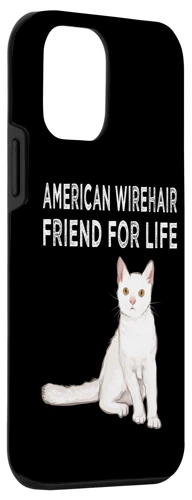
Caring for your American Wirehair may seem like a straightforward task, but there are some special cases that require extra attention. Whether it’s dealing with excessive shedding, pesky fleas and ticks, or unexpected health issues, being prepared for these situations is crucial in ensuring your feline friend stays healthy and happy. In this section, we’ll explore various specialized grooming techniques and tips to help you handle these unique cases with confidence and ease.
Shedding
One of the common grooming concerns for American Wirehairs is shedding. While they are not heavy shedders like some breeds, they still shed moderately throughout the year. If you want to keep your home free from loose hair, regular grooming is essential. Here are some tips to manage shedding in your American Wirehair.
- Brushing: Regular brushing can help to remove loose hair and prevent matting, which can trap dead hair. Use a slicker brush or a grooming mitt to brush your American Wirehair at least once a week. Focus on the problem areas such as the underarms and behind the ears. Be gentle while brushing, so as not to cause any discomfort to your pet.
- Bathing: Bathing can help to remove loose hair from the coat and prevent it from spreading all over the house. Use a waterless shampoo or a mild pet shampoo to bathe your American Wirehair once every two to three months. Ensure that the water is warm and not too hot, as cats are sensitive to temperature. Rinse the coat well with water to get rid of any shampoo residue.
- Diet: What your American Wirehair eats can also impact shedding. A healthy, balanced diet with the right amount of vitamins and minerals can help to reduce shedding. Provide your pet with high-quality cat food that contains essential fatty acids, which promote a healthy coat.
- Supplements: You can also give supplements like omega-3 fatty acids to your American Wirehair. These supplements support skin and coat health and can reduce shedding in the long run. Consult your veterinarian before giving any supplements to your pet, as they may have some side effects.
By following these tips regularly, you can manage shedding in your American Wirehair and enjoy a cleaner home. Remember, regular grooming is not only essential for managing shedding but also helps to build a strong bond with your pet.
Flea and Tick Treatments
As a pet owner, protecting your American Wirehair from fleas and ticks is crucial for its overall health. Fleas and ticks can transmit dangerous diseases and cause discomfort, irritation, and even allergies in your furry companion. Here are some flea and tick treatments that you can use to keep your pet safe and healthy:
| Treatment | Description |
|---|---|
| Flea and tick prevention medication | There are many types of flea and tick prevention medications available on the market. These medications can be in the form of oral pills, topical liquids, or collar types. It is important to consult with your veterinarian about the best option for your American Wirehair. |
| Flea comb | A flea comb is a specialized comb with closely spaced teeth that can remove fleas, flea eggs, and flea dirt from your pet’s coat. Regular use of a flea comb can help control flea infestations. |
| Flea and tick shampoo | Flea and tick shampoos are formulated to kill fleas and ticks on contact. However, they are not a long-term solution and need to be used in conjunction with other flea and tick treatments. |
| Natural remedies | Some natural remedies such as essential oils, garlic, and apple cider vinegar are said to be effective in repelling fleas and ticks. However, it is important to research and consult with your veterinarian before using any natural remedies on your pet. |
It is important to note that preventing fleas and ticks is easier than treating an infestation. Regular inspections of your pet’s coat, bedding, and environment can help identify any signs of flea or tick presence. Proper flea and tick treatments are crucial in keeping your American Wirehair healthy and happy.
Health Issues
Keeping your American Wirehair healthy is essential for their overall well-being. In this section, we will cover some common health issues that may affect your furry friend and how to address them.
| Health Issue | Symptoms | Treatment | Prevention |
|---|---|---|---|
| Obesity | Excessive weight gain, lethargy, difficulty breathing | Dietary changes, exercise regimen, consulting with a veterinarian | Controlled diet and exercise, regular vet check-ups |
| Dental Issues | Bad breath, swollen gums, tooth loss | Regular dental check-ups, professional cleaning, preventing plaque build-up through brushing | Brushing their teeth regularly, giving dental chews and toys to promote healthy teeth and gums |
| Urinary Tract Infections (UTIs) | Painful urination, frequent urination, blood in urine | Antibiotics, urine culture and sensitivity testing, pain management | Maintain good hygiene, provide fresh and clean water, monitor litter box habits |
| Skin Issues | Excessive scratching, dry and flaky skin, rashes and bumps | Medicated shampoos, topical creams, supplements, allergy testing | Regular grooming, avoiding allergens, providing a healthy diet with essential fatty acids |
It’s important to keep up with your American Wirehair’s regular veterinary check-ups to ensure any potential health issues are identified early on. In addition to that, providing a balanced diet, engaging in regular exercise, and maintaining good hygiene can help prevent a range of health issues for your feline friend.
Troubleshooting
As much as grooming your American Wirehair can be a fun and rewarding experience, it’s not always a walk in the park. Sometimes, things can get a little tricky, and your cat may encounter some common issues that can be difficult to deal with. That’s why in this section, we’ll address some of the most common issues you may run into when grooming your American Wirehair and provide some troubleshooting tips to help you overcome them. So if you’re feeling perplexed about how to deal with matting, overgrown nails, or retractile claws, keep on reading!
Matting
Matting can be a common problem for American Wirehair cats, especially for those with longer and thicker coats. It occurs when dead hair and dirt become tangled and clump together, creating painful mats that pull on the cat’s skin and restrict movement. Here are some tips on how to prevent and deal with matting:
- Regular Brushing: Use a slicker brush to remove loose fur and prevent matting. Brush your cat at least once a week, paying careful attention to areas prone to matting, such as the belly, armpits, and behind the ears.
- Proper Bathing: Baths can help loosen mats and remove dirt. Use a gentle shampoo designed for cats and make sure to rinse thoroughly. Avoid pulling on the mat while your cat is wet, as it can make it worse.
- Trimming: If the mat is not too close to the skin, you can try carefully trimming it off with scissors. Be very careful not to cut your cat’s skin in the process.
- Professional Grooming: Consider taking your cat to a professional groomer for a “lion cut” if their coat is severely matted. This involves trimming the fur short all over the body and giving them a mane and tail, resembling a lion.
If the matting is severe or close to the skin, it may be best to see a veterinarian or professional groomer to avoid causing pain or injury to your pet. Remember, prevention is key to preventing matting in the first place, so be sure to groom your cat regularly and keep an eye out for any signs of matting. With proper grooming and care, your American Wirehair can have a healthy and beautiful coat for years to come.
Overgrown Nails
Overgrown nails can be uncomfortable and painful for your American Wirehair cat. It can also lead to difficulty in walking, running, and even climbing. It’s essential to learn how to trim your cat’s nails properly. Here we have some tips and tricks to help you with the process:
| Step 1: | Hold your cat securely but gently, as she may become nervous or anxious during the process. |
| Step 2: | Locate the quick – the pink part of the nail that contains nerves and blood vessels. |
| Step 3: | Use a sharp pair of nail clippers designed for cats to avoid crushing the nail. |
| Step 4: | Cut the nail at a 45-degree angle just below the quick, to avoid cutting it and causing bleeding. |
| Step 5: | If you accidentally cut the quick, apply styptic powder to stop the bleeding. |
| Step 6: | Reward your cat with treats and praise to make it a positive experience. |
Make sure to clip only a small amount of the nail at a time, and always have styptic powder or cornstarch at hand in case of bleeding. If you’re not comfortable trimming your cat’s nails, consult with a professional groomer or veterinarian to avoid causing injury.
Retractile Claws
It’s important to note that American Wirehairs have retractile claws, which means that their nails can retract or extend depending on their needs. This can make trimming their nails a bit tricky, but it’s still an important part of grooming. Neglecting to trim your cat’s nails can lead to discomfort or even infections.
Here are some tips for dealing with retractile claws:
- Make trimming a regular part of your grooming routine to keep nails from becoming overgrown.
- Use a pair of high-quality nail clippers, specifically designed for cats, to ensure a clean cut and reduce the risk of injury.
- Keep styptic powder on hand in case of accidental nail trimming too short.
- If you’re unsure about trimming your cat’s nails, seek guidance from a veterinarian or professional groomer.
- You can also try using a scratching post or pad to help wear down your cat’s nails naturally.
Remember, regular grooming including nail trimming is crucial for your American Wirehair’s overall health and well-being.
Conclusion
In conclusion, grooming your American Wirehair is an integral part of keeping your pet healthy, happy and comfortable. Regular grooming sessions, using the proper tools and techniques, can help to keep their coat shiny, prevent matting and hairballs, and reduce the chances of any health issues. It’s also an opportunity to strengthen the bond between you and your pet and is an enjoyable activity for both parties.
Investing in the right grooming tools, such as a slicker brush, wide-tooth comb, nail clippers, ear cleaner, and towel with waterless shampoo, can make all the difference in the grooming experience for your pet. Additionally, considering special cases such as shedding, flea and tick treatments, and health issues can help you to provide the best care possible for your beloved furry friend.
In the event of any issues such as matting, overgrown nails, or retractile claws, don’t hesitate to seek help from a professional groomer or veterinarian. With patience, practice, and some tricks and tips, you can become an expert in grooming your American Wirehair.
So, make grooming a regular part of your pet’s routine and enjoy the benefits of a happy and healthy pet with a shiny and lustrous coat. Show your love and care for your American Wirehair with the proper grooming techniques, and watch them thrive.
Frequently Asked Questions
How often should I groom my American Wirehair cat?
It is recommended to brush your American Wirehair’s coat at least once a week and bathe them every 4-6 months.
What do I need to groom my American Wirehair?
You’ll need a slicker brush, wide-tooth comb, nail clippers, ear cleaner, towel, and waterless shampoo.
How do I prevent matting in my American Wirehair’s coat?
Regular brushing and combing can prevent matting in your cat’s coat. Use a slicker brush to gently brush through any tangles or mats.
Can I use regular shampoo on my American Wirehair?
No, it is recommended to use a waterless shampoo specifically made for cats to avoid irritation or allergic reactions.
How do I trim my American Wirehair’s nails?
Use nail clippers specifically designed for cats and clip just the tips of the nails. Avoid clipping the quick, which is the pink part of the nail containing blood vessels.
How often should I clean my American Wirehair’s ears?
It’s best to clean your cat’s ears once a week to prevent wax buildup and ear infections.
What should I do if my American Wirehair gets fleas or ticks?
Use a flea and tick treatment specifically made for cats. Consult with your veterinarian for the best options.
What should I do if my American Wirehair has retractile claws?
If your cat’s claws are retracting and not fully extending, consult with your veterinarian to determine if there is an underlying health issue or if trimming the nails can help.
What can I do if my American Wirehair hates being groomed?
Try to slowly introduce grooming techniques and use positive reinforcement with treats and praise. If your cat still refuses, consult with a professional groomer or your veterinarian for assistance.
How do I know if my American Wirehair has a health issue affecting their coat?
If you notice any changes in your cat’s coat, such as excessive shedding, bald patches, or skin irritation, consult with your veterinarian to rule out any underlying health issues.




